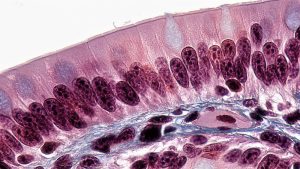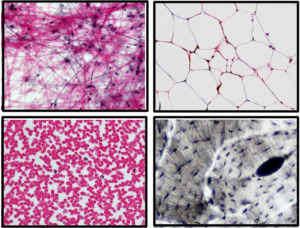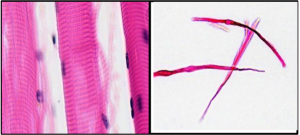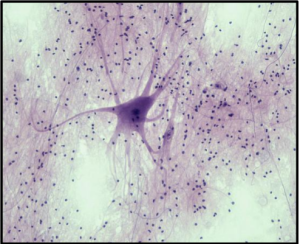Lesson 1: Levels of Organization and Organ Systems Overview
Levels of Structural Organization and Organ Systems
By the end of this lesson, students will be able to:
- Define, in order from simplest (chemical) to most complex (organismal), the major levels of structural organization in the human organism.
- Utilize systemic and regional approaches to relate gross anatomical structures to their functions.
- Explain how the cells and forms of the tissues contribute to their function in the body.
- Identify the different tissue types (nervous, muscle, connective, epithelial, and membrane) by microscopic methods.
Introduction
The human body is organized into hierarchical levels of structural complexity, from the simplest chemical structures to the entire organism. This organization supports the proper function and regulation of physiological processes, ensuring homeostasis and survival.
Levels of Structural Organization
The following hierarchical levels of structural complexity, are arranged below in Figure 1 from the simplest (top) to the most complex (base). As we gain complexity, properties emerge, demonstrating that the sum is greater than its parts.
- Atoms – The basic units of matter that combine to form molecules.
- Cells – The smallest functional units of life, composed of molecules.
- Tissues – Groups of similar cells working together to perform a common function.
- Organs – Structures of multiple tissue types working together for a specific function.
- Organ Systems – Groups of organs that work collaboratively to perform bodily functions.
- Organism – The complete human body functioning as a whole.
Anatomy and Organization of the Human Body
Gross Anatomy versus Microscopic Anatomy
- Gross Anatomy refers to structures visible to the naked eye, studied via systemic, regional, and surface approaches. See Figure 2.
- Histology examines tissues and cells under a microscope to understand their organization and function. See Figure 3.
Tissue Types
Epithelial tissue, also called epithelium, refers to the sheets of cells that cover exterior surfaces of the body, line internal cavities and passageways, and form certain glands. Connective tissue, as its name implies, binds the cells and organs of the body together and functions in the protection, support, and integration of all parts of the body. Muscle tissue is excitable, responding to stimulation and contracting to provide movement, and occurs in three major types: skeletal (voluntary) muscle, smooth muscle, and cardiac muscle in the heart. Nervous tissue is also excitable, allowing the propagation of electrochemical signals through nerve impulses that communicate between different body regions.
Epithelial Tissue
-
- Locations: Covers surfaces, lines cavities.
- Functions: Protection, absorption, secretion, excretion, filtration.
- Characteristics: Tightly packed cells, rapid regeneration, presence of a free surface.

Connective Tissue
-
- Locations: Found throughout the body.
- Functions: Binds structures, provides support, stores energy, and transports substances.
- Characteristics: Composed of few cells within an extracellular matrix (EM), slow replication.

Muscular Tissue
-
- Locations: Attached to bones, within the heart, in the walls of hollow organs.
- Functions: Enables movement and stability.
- Characteristics: Highly cellular, vascular, capable of contraction.

Nervous Tissue
-
- Locations: Brain, spinal cord, nerves.
- Functions: Coordinates bodily functions through neurons and neuroglia.
- Characteristics: Avascular, composed of neurons with axons and dendrites.

Overview of Organ Systems
The next level of organization is the organ, where several types of tissues come together to form a working unit. Just as knowing the structure and function of cells helps you study tissues, knowledge of tissues will help you understand how organs function. The epithelial and connective tissues are discussed in detail in this chapter. Muscle and nervous tissues will be discussed only briefly in this chapter.
The human body consists of multiple organ systems, each performing specialized functions essential for survival and homeostasis.
- Integumentary System see Figure 9
- Organs: Skin, hair, nails, glands.
- Functions: Protection, water retention, thermoregulation, vitamin D synthesis.
- Skeletal System –see Figure 9
- Organs: Bones, cartilage, ligaments.
- Functions: Support, movement, blood formation, mineral storage.
- Muscular System –see Figure 9
- Organs: Skeletal muscles.
- Functions: Movement, stability, heat production.
- Nervous System–see Figure 9
- Organs: Brain, spinal cord, nerves.
- Functions: Rapid internal communication, motor control, sensory perception.
- Endocrine System-see Figure 9
- Organs: Glands (pituitary, thyroid, adrenal, pancreas, etc.).
- Functions: Hormone production and regulation of body functions.
- Cardiovascular System– see Figure 9
- Organs: Heart, blood vessels.
- Functions: Circulation of blood, nutrient and gas transport.
- Lymphatic System– see Figure 10
- Organs: Lymph nodes, spleen, tonsils.
- Functions: Immune response, fluid balance.
- Respiratory System– see Figure 10
- Organs: Lungs, trachea, bronchi.
- Functions: Oxygen intake, carbon dioxide expulsion.
- Digestive System– see Figure 10
- Organs: Stomach, intestines, liver, pancreas.
- Functions: Breakdown and absorption of nutrients.
- Urinary System– see Figure 10
- Organs: Kidneys, bladder, urethra.
- Functions: Waste excretion, fluid balance, blood pressure regulation.
- Reproductive System– see Figure 10
- Organs: Testes, ovaries, uterus.
- Functions: Gamete production, fetal development.
Summary
The human body’s structural organization ensures coordinated function across all levels, from atoms to organ systems. Understanding these systems provides insight into anatomy and physiology, forming the foundation for medical and biological sciences.
Watch this lesson video, walking you through Module 1, Lesson 1, Levels of Structural Organization and Organ Systems (PDF) slides.
Practice Questions
Use these practice questions to assess your knowledge before you move on to the next section.


